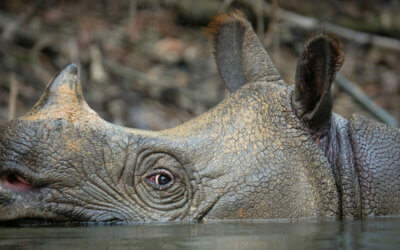4 Environmental Campaigns that Used Unity to Create Success
4 Environmental Campaigns that Used Unity to Create Success
The Takeaway:
The environmental movement has evolved from addressing place-based, single source issues (polluting factories and industrial sites) that can be solved within small communities and/or issue groups to tackling systemic problems that require widespread, global change across a multitude of cultures and nationalities. Unity in mission is the essential ingredient to creating the change we need, at scale, to keep Earth wild.
Here are 4 examples of environmental campaigns that have (and still are) creating change using the power of unity.
1. Silent Spring/DDT
In 1962, Rachel Carson published the book Silent Spring and in so doing, launched the modern environmental movement by alerting the public to the dangers of DDT. While regulating the use of pesticides is no easy feat, the steps needed to create change are relatively simple compared to contemporary environmental challenges, and involve changing only a handful of policies.
But before her policy triumph, she would need to overcome the chemical industry’s attacks. And attack they did, not stopping at her scientific evidence, but assaulting her integrity and sanity as well. Her anticipation and preparation of this paid off. She compiled 55 pages of notes and a list of experts that approved her work. Many of those scientists rose to her defense and President Kennedy ordered the work to be further examined, and from there – policies were created.
Rachel Carson was able to capture the imagination of the public. She was supported by The New Yorker sharing her work, CBS Reports interviews, and powerful advocates, including President Kennedy. The success of this campaign can largely be attributed to the community uptake of scientific evidence that later sparked necessary leadership support.
2. Save the Rainforests
The 1980s saw the rise of the first international movement to save Earth’s rainforests. This marked the globalization of environmentalism. The brainchild of WILD’s friend and partner, Randy “Hurricane” Hayes, the campaign to save the rainforests represented the evolution of the environmental movement as it began to recognize the interconnectedness of all of nature. Even though it was still focused on one issue/place (primarily the Amazon rainforest) it was the first time an environmental issue had been internationalized to this degree.
Hayes and Mike Roselle founded The Rainforest Action Network in 1985. Soon after they contacted Herbert Chao Gunther, a former anti-war activist and environmental and social justice campaigner. Working under the belief that “there was no effective campaign without a serious media strategy,” Gunther and Hayes worked together for two years creating an elaborate education campaign. They also worked with Earth First! and other organizations to create national and international buzz.
In this campaign, they focused on the idea that you need to start with awareness. This led to a perspective shift that elevated the words ‘conservation’ and ‘environmentalism’ in the public consciousness. Even The New York Times changed the way they wrote about the destruction of rainforests as a result of this campaign. When we work together, combine our skills, and think about something larger than ourselves, we can internationalize campaigns and ideas and create positive change.
3. The Climate Crisis
It has taken decades for the climate movement to become an international force, but by 2017 and the United Nations Climate COP in Paris, there could be no doubt that climate activists had taken their game to the next level. One possible reason for the slow evolution of the climate movement is the fact that it is a dispersed problem, located everywhere, with a multitude of potential solutions. Maintaining unity with such an issue is difficult, but is aided by the fact that many climate solutions, such as renewable energy, can result in immense profits for powerful actors.
4. Keep Earth Wild/Nature Needs Half
The next generation of environmental movements is Nature Needs Half. Started in 2009, the Nature Needs Half movement is an international coalition of people from all walks of life working to defend nature at scale in order to continue supporting human well-beings.
Like the climate movement, Nature Needs Half addresses a disperse, widespread, systemic problem and proposes a multitude of solutions. Protecting the biosphere is as necessary as defending the climate (and in fact, will help stabilize the climate emergency) and requires a unified, powerful international coalition to succeed.
Nature is stronger when we unite into a single coalition and community, and so is our future.
READ NEXT
A Reflection by Timothy Hass, WILD’s Trustee
I know that for many people, venturing into wilderness areas is a very important element for health and balance in their lives. I feel this as well, but also, for me, the nature directly around me is equally important.
Tech & Tradition – Q&A with Ruari Bradburn, Chief Technology Officer at Langland Conservation
“Tech & Tradition” delves into the evolving landscape of conservation, exploring the synergy between traditional wisdom and technological innovation.
Mentors Making a Difference: Phoebe and David’s Journey with CoalitionWILD
At CoalitionWILD, we believe in the power of mentorship and the transformative impact it can have on the lives of young conservationists. Here, we shine a spotlight on two exceptional repeat mentors, Phoebe Barnard and David Manski, who have been actively involved in our Global Mentorship Program. Their dedication, wisdom, and passion for conservation have inspired and guided numerous young professionals on their journey to become future leaders in the field.




0 Comments